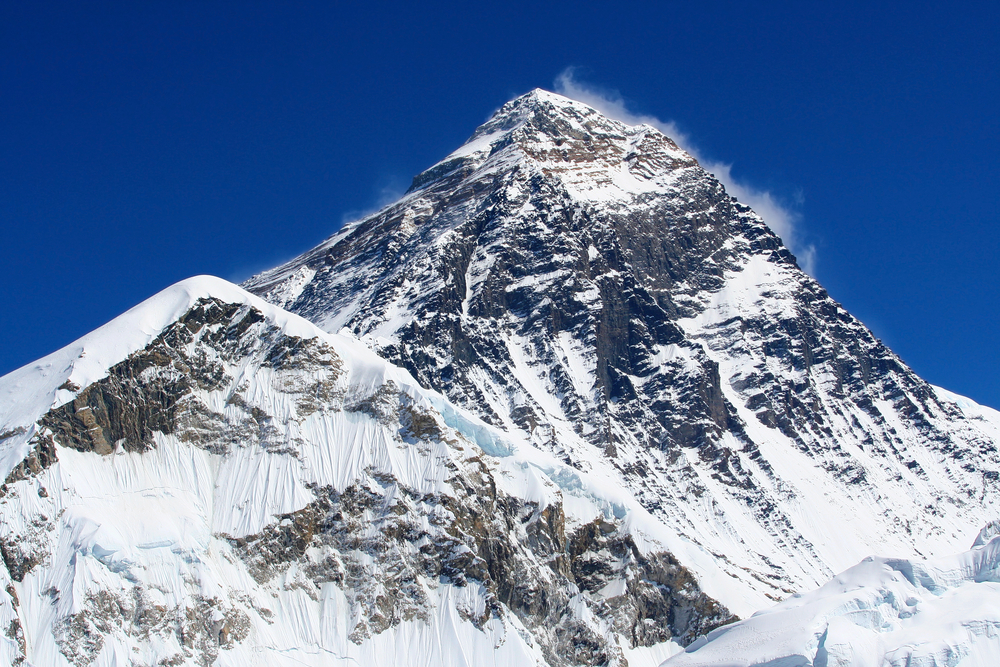Exploring Earth’s Extremes
- April 23, 2015
- By

The wow factor: it gets us every time. And Earth’s extremes are as big as they get. Have fun sharing these with your students. Which ones elicit the biggest wows? Which ones are most surprising? Do a little of your own exploring using the links to more information too.
Tallest Mountain: 29,028 feet, Mt. Everest, Nepal/Tibet. This number has been in dispute, as some records say 29,035 feet based on a 1999 survey. No matter, because in a few thousand years they will need to revise it again, since Mt. Everest grows taller by 0.1576 inches.
Lowest point on Land: 1,360 feet below sea level, Dead Sea, Israel/Jordan. Death Valley, California is the lowest place in the United States but it is only 282 feet below sea level. It’s worth mentioning that all the lowest places on Earth are in very dry climates, otherwise they would fill with water. Here’s a nice summary of low spots. http://www.nps.gov/deva/learn/nature/lowest-places-on-earth.htm
Deepest Ocean: 36,200 feet, Challenger Deep, part of the Mariana Trench, Southwest Pacific Ocean. In 2012 explorer James Cameron descended to this point in a one-person submarine. http://news.nationalgeographic.com/news/2012/03/120325-james-cameron-mariana-trench-challenger-deep-deepest-science-sub/. This link by Smithsonian has lots of information on deep ocean exploration and also some lesson plans. http://ocean.si.edu/deep-sea
Deepest Cave: Krubera Cave, Ukraine (near the Black Sea). 7,208 feet explored depth as of 2012. To explore and measure the depths of this cave teams of speleologists have spent several weeks continuously underground, hauling tons of gear and setting up underground camps. More at http://science.nationalgeographic.com/science/earth/surface-of-the-earth/deepest-cave/.
Hottest recorded temperature, 134 degrees Fahrenheit, Death Valley, California, July 1913. The previous record of 122 degrees in Libya 1912 was discredited in 2010. NOAA has a page devoted to climate extremes in the United States: https://www.ncdc.noaa.gov/extremes/extreme-us-climates.php
Coldest Recorded Temperature: Minus 129 degrees Fahrenheit, Vostok Station, Antarctica, July 21, 1983. But what about places where people really live? Oymyakon Russia averages 51 below zero in the winter. This article and photo essay from Wired Magazine tells us what life is like there: http://www.wired.com/2015/01/amos-chapple-the-coldest-place-on-earth/
Biggest River, by flow: The Amazon, in Brazil, carrying an average of 7,381,000 cubic feet of water per second. During the rainy season the river can be 25 miles wide in places. A flood of extreme facts on the Amazon River can be found here: http://www.extremescience.com/amazon-river.htm
Longest River: Nile, Africa, 4,132 miles. Another remarkable river statistic belongs to one of the world’s siltiest rivers: China’s Huang He, or Yellow River. The Huang He has formed a delta at the river mouth, in the Yellow Sea; each year the delta grows by 20 square kilometers (equal to 4,400 football fields). As it grows, the Chinese build new farms on it.
Wettest Place: 467.35 inches of rain peryear (that is 39 feet), Mawsynram, Meghalaya State, India. The wettest spots in the United States are mostly in the southeastern region: http://www.livescience.com/1558-study-reveals-top-10-wettest-cities.html
Activities:
Besides exploring some of the links provided above, have students write about one or more natural extremes they have personally experienced, such as the coldest or hottest temperatures they’ve been in. How did it feel different from “normal”? What effects did they notice such as frozen eyelashes, or difficulty catching their breath at high altitude? Was it fun or scary being in such conditions?
Think about other Earth’s extremes to explore. Some ideas are strongest earthquakes, hurricanes, deepest or largest lakes, deepest canyon. Have students discuss why or why not all sources may not agree on the facts (for example some records such as river width might be somewhat subjective and depend on season, if you count deltas etc; most damaging earthquakes are not necessarily the strongest; old records may be broken or discredited).

Kids Discover Talks with Television Lighting Designer Christopher Landy About the Rockefeller Center Christmas Tree Lighting
- December 9, 2025

It’s the Most Wonderful Time of the Year… For Community Service Projects!
- December 8, 2025

The Rockefeller Center Christmas Tree Lights the 2025 Holiday Season in New York City
- December 3, 2025